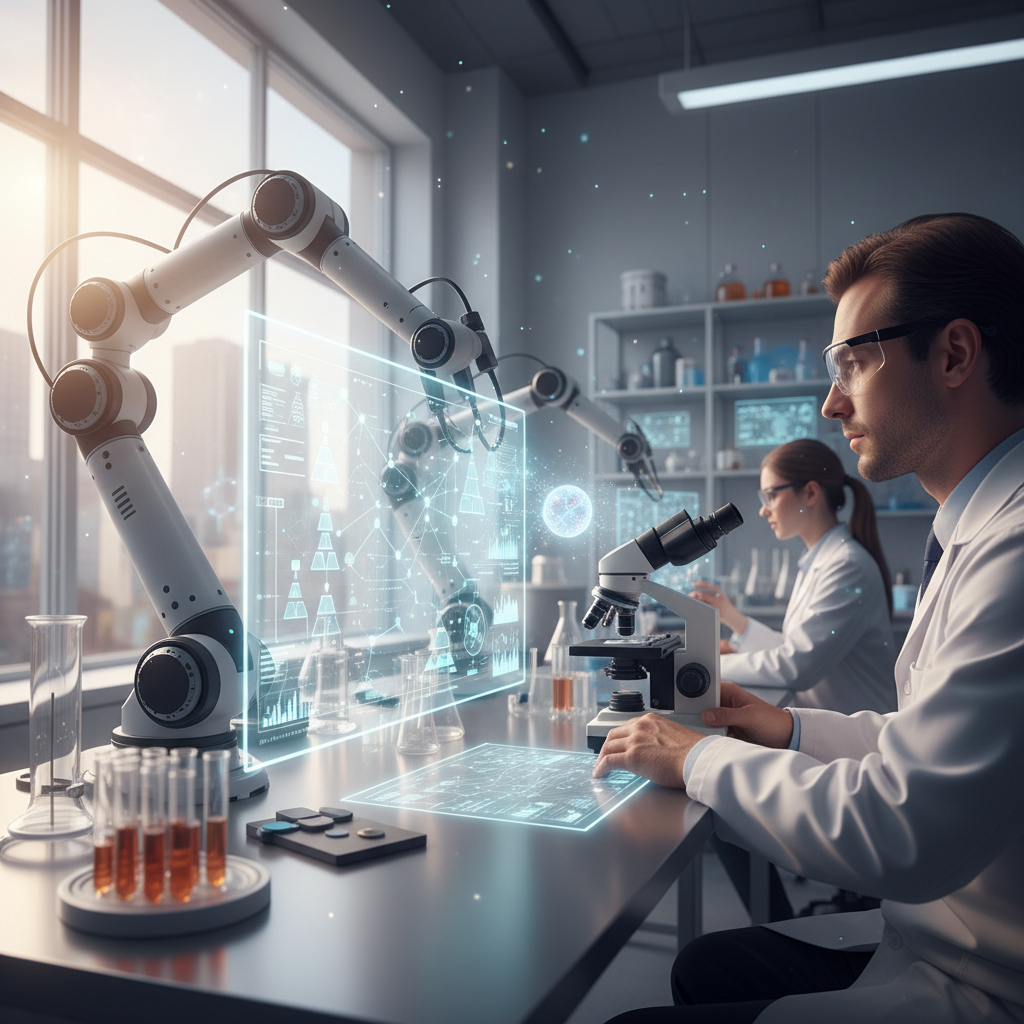
Table of Contents
Introduction
In an era defined by rapid innovation and digital transformation, technology and artificial intelligence (AI) stand at the forefront of revolutionizing our world. Imagine a future where machines learn, adapt, and assist us seamlessly in our daily lives, industries, and decision-making processes. This fascinating intersection of human ingenuity and advanced computing is no longer a distant dream but a present-day reality that impacts everything from healthcare to finance. Understanding the profound importance of AI and technology today is essential for anyone looking to navigate this dynamic landscape.
The significance of artificial intelligence is underscored by its integration into countless aspects of modern life. Statistics reveal that the AI software market alone is projected to reach hundreds of billions of dollars within the next few years, driven by advancements in machine learning, natural language processing, and robotics. These technologies empower applications ranging from voice assistants to autonomous vehicles, creating a new paradigm for efficiency and interaction. However, the growing influence of AI also prompts many questions and concerns surrounding ethics, employment, and societal impact. For individuals and businesses alike, grasping these changes and their implications is more crucial than ever.
Consider a world where AI revolutionizes how we diagnose diseases, personalize education, or manage energy resources. The potential benefits are staggering, but they come with challenges that require thoughtful exploration. Many worry about job displacement and ethical boundaries, while others are excited about opportunities for innovation and improved quality of life. This emotional complexity makes the study of technology and AI deeply relevant, as it touches on hopes, fears, and the fundamental ways we interact with the world around us. Readers may also want to explore the latest technology trends shaping our future to better understand this fast-evolving space.
At its core, technology and AI are not abstract concepts but practical tools that shape our everyday experiences. Whether it’s the smartphone in your pocket, personalized recommendations on streaming platforms, or AI-powered customer service, these innovations are increasingly intertwined with daily life. This guide will help address common questions and uncertainties, providing a foundation for informed discussions and decisions. If you’re new to AI, starting with an overview of foundational technology concepts can provide a strong base to build upon.
What You’ll Learn in This Guide
This comprehensive guide will take you through the essential facets of technology and artificial intelligence, offering insights that are valuable to novices and professionals alike. We aim to clarify complex ideas and highlight their practical implications to empower you in navigating this transformative era.
- Understanding the Basics: You’ll learn what artificial intelligence is, including its core principles and different types such as reactive machines and self-aware AI, helping you grasp the fundamental concepts that underpin this technology.
- Exploring Key Technologies: Dive into the technologies driving AI today, including machine learning, natural language processing, computer vision, and robotics. We explain how these tools work and their significance in real-world applications.
- Examining Applications and Impact: Discover how AI integrates with various industries such as healthcare, finance, and smart homes. We discuss its benefits like increased efficiency and cost reduction, along with societal and economic impacts that highlight both opportunities and challenges.
- Addressing Ethical and Future Considerations: We’ll explore ethical dilemmas such as privacy concerns and bias, as well as future trends and how businesses might adopt AI solutions. This perspective will prepare you to think critically about AI’s role in our society.
As we delve deeper into the subject, this article will cover the history and evolution of AI, tracing its milestones from inception to today’s breakthroughs. Understanding this journey offers context for current technologies and their capabilities. You’ll also gain a detailed look at common applications and how AI is transforming sectors ranging from autonomous vehicles to financial services, providing you with practical examples that illustrate AI’s versatile potential.
The guide also highlights the benefits and challenges brought by AI integration, emphasizing the importance of informed adoption. By exploring ethical considerations, you will be empowered to recognize and evaluate the complex issues that come with rapid AI development. Finally, we will look ahead to future trends, offering insights into how upcoming innovations may further reshape our lives and industries. This structured approach ensures that you gain a thorough and balanced understanding of both the promises and pitfalls of artificial intelligence.
Prepare to embark on an informative journey that equips you with the knowledge to engage confidently with the evolving world of technology and artificial intelligence. Whether you are a curious reader, a business leader considering AI adoption, or simply someone eager to understand the forces shaping our future, this guide is designed to meet your needs. Let’s begin by exploring the fascinating world of AI and technology, highlighting the impact they have on our modern society and the exciting possibilities that lie ahead.

Building upon the introduction to technology and artificial intelligence (AI), it’s important to delve deeper into understanding what AI truly entails and the broad spectrum of applications it encompasses. As AI continues to evolve, so does its integration into numerous technological domains, transforming how businesses operate, how individuals interact with devices, and how industries innovate. This discussion will first explore the foundational concepts and core components of AI to provide a solid background. Subsequently, we will investigate how AI is applied practically across various sectors, highlighting its tangible benefits and transformative potential. By comprehensively examining these aspects, readers will gain a clearer understanding of AI’s multifaceted role in today’s tech-driven world.
What is Artificial Intelligence and Its Core Technologies
Artificial Intelligence refers to the simulation of human intelligence processes by computer systems. These systems are designed to perform tasks that typically require human cognition such as learning, reasoning, problem-solving, and language understanding. AI can be classified into varying types based on its capabilities—from simple reactive machines that operate in specific scenarios to advanced self-aware AI that mimics human consciousness. At the heart of AI are several key technologies that enable its diverse functions. Comprehending these technologies is crucial for appreciating AI’s current capabilities and future potential. To fully grasp this concept, it helps to understand latest technology trends that embrace these AI breakthroughs.
Advances in machine learning have empowered AI systems to analyze vast datasets, identify patterns, and adapt without being explicitly programmed for each task. Natural Language Processing (NLP) enables machines to comprehend and generate human language, facilitating chatbots and voice assistants. Computer vision allows AI to interpret and analyze visual information from the world, playing a key role in facial recognition and autonomous vehicles. Robotics combines these cognitive capabilities with mechanical functions to perform physical tasks autonomously or semi-autonomously. Together, these technologies form the backbone of AI’s growing influence across multiple industries.
Key Aspects of Artificial Intelligence Technologies
Understanding AI requires recognizing the foundational technologies that empower its functions:
- Machine Learning: A subset of AI focused on developing algorithms that enable machines to learn from and make predictions based on data. This technology is pivotal in areas such as predictive analytics and personalized recommendations.
- Natural Language Processing (NLP): This technology gives machines the ability to understand, interpret, and respond to human language, fostering more natural interactions between humans and computers through chatbots and virtual assistants.
- Computer Vision: Enabling machines to analyze visual inputs like images and videos, computer vision is critical for applications including security surveillance, medical imaging, and autonomous driving.
- Robotics: Integrating AI to control mechanical devices, robotics expands AI’s reach into the physical world, facilitating automation in manufacturing, delivery systems, and healthcare services.
Applications and Benefits of AI Integration in Technology
AI’s integration into technology extends beyond theoretical concepts, showing significant practical impact across diverse fields. From healthcare to finance, AI-powered systems are enhancing efficiency, improving decision-making, and transforming user experiences. Exploring these applications reveals how AI drives innovation and provides competitive advantages to businesses and services. This deeper understanding helps stakeholders to appreciate AI not just as an abstract idea but as a crucial component of modern technological solutions.
Many technological implementations harness AI’s ability to automate routine tasks, reduce errors, and derive insights from large datasets. For example, autonomous vehicles use AI algorithms to process sensor data and navigate complex environments safely. Smart home devices employ AI to personalize user preferences and improve energy efficiency. In financial services, AI enhances fraud detection and risk management processes. These applications demonstrate AI’s role in streamlining operations and opening new frontiers for technological development. For a detailed breakdown of AI-driven strategies, see our guide on latest technology trends and their impact.
Important Considerations for AI Applications
When applying AI to technology, several factors contribute to its effectiveness and value:
- Healthcare and Medicine: AI improves diagnostic accuracy, patient monitoring, and personalized treatment plans by analyzing medical data like images and records. This contributes to better healthcare outcomes and more efficient resource use.
- Autonomous Vehicles: By integrating AI with computer vision and sensors, self-driving cars can interpret their surroundings and make real-time decisions, enhancing safety and transforming transportation.
- Smart Home Devices: AI enables smart thermostats, security cameras, and voice assistants to learn user habits and optimize home environments, providing convenience and energy savings.
- Financial Services: AI-driven tools detect fraudulent transactions, automate trading, and improve customer service, fostering trust and efficiency in financial operations.

Conclusion
Technology and artificial intelligence have become central to the transformation sweeping across modern society. Throughout this comprehensive overview, we’ve explored the foundational concepts of AI including its core types such as reactive machines, limited memory, theory of mind, and self-aware AI, alongside key technologies like machine learning, natural language processing, computer vision, and robotics. We traced the evolution of AI from its early inception to today’s cutting-edge applications, underscoring major milestones that have shaped its rapid growth. Additionally, we examined how AI integrates across various industries, notably healthcare, autonomous vehicles, smart home devices, financial services, and customer support chatbots, highlighting the tangible benefits of increased efficiency, cost reduction, improved decision-making, and enhanced user experiences. However, these advancements come with important societal and economic implications, including ethical challenges around privacy, bias, job displacement, accountability, and transparency, which require ongoing attention and responsible governance to ensure technology benefits all.
Understanding AI’s ethical dimensions is crucial as the technology becomes more embedded in daily life. We discussed frameworks and regulatory approaches aimed at promoting fairness and inclusive innovation, emphasizing the role of community involvement and transparent practices. Looking to the future, we previewed emerging trends such as more adaptive AI systems, expanded AI use in business operations, and advancements that promise to redefine interaction paradigms and productivity. By grounding these insights within a practical context, we empowered readers to grasp both the opportunities and challenges AI presents, reinforcing its multifaceted impact on society and the economy.
To move forward effectively, individuals and businesses should focus on continuous learning and thoughtful adoption of AI technologies. Practical steps include assessing current processes for AI integration potential, investing in relevant AI tools while prioritizing ethical considerations, and training teams to leverage AI capabilities responsibly. Engaging with up-to-date resources and expert guidance will deepen understanding and readiness for future developments. For those interested in technology trends shaping tomorrow, exploring materials such as the latest technology trends of 2025 can offer valuable perspectives to inform strategic decisions and innovation pathways.
In conclusion, the journey through technology and artificial intelligence reveals a landscape rich with possibilities and responsibilities. Embracing AI thoughtfully enables us to harness transformative benefits while addressing societal impacts critically and conscientiously. Whether you are new to AI or a seasoned professional, staying informed and proactive will empower you to navigate this dynamic field confidently. Continue exploring and engaging with the evolving world of AI to unlock its full potential and contribute meaningfully to shaping the future.
